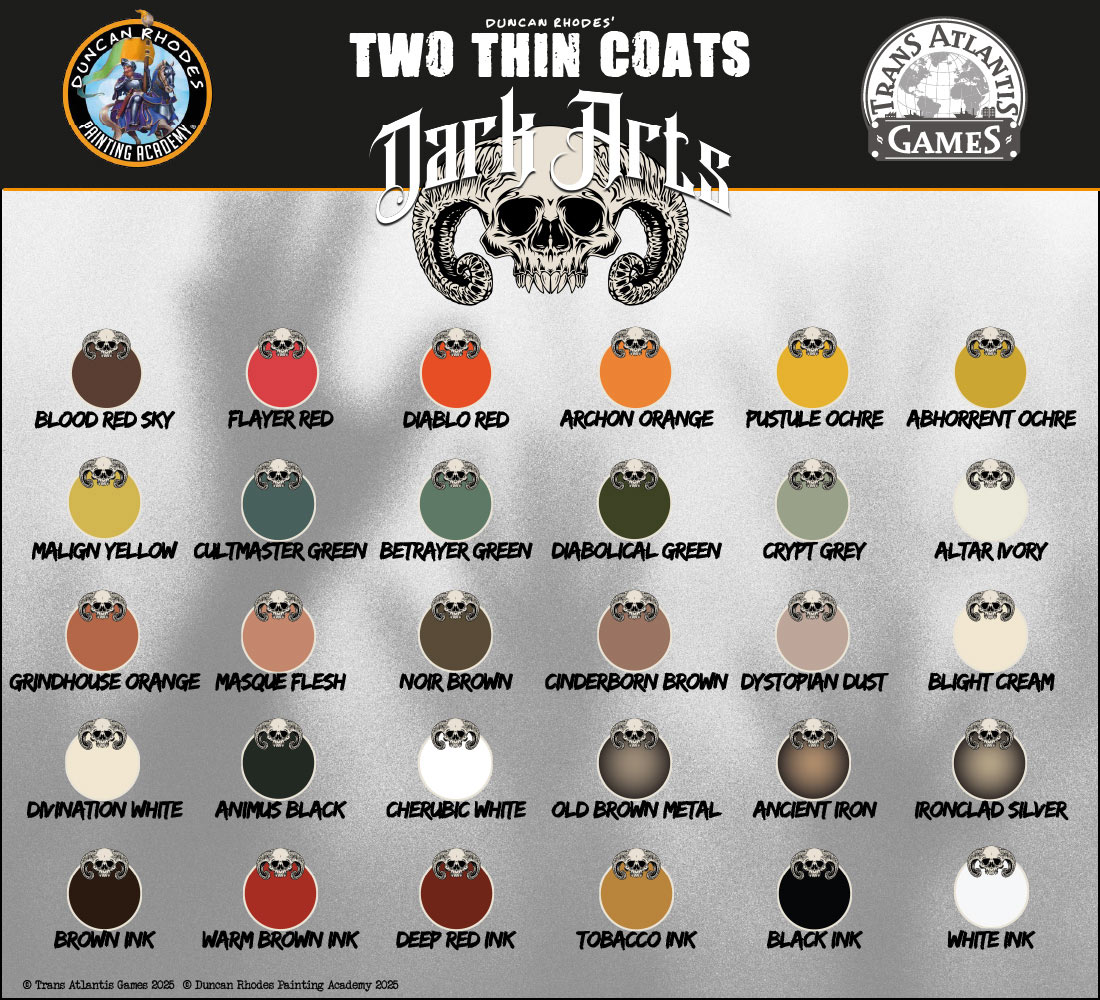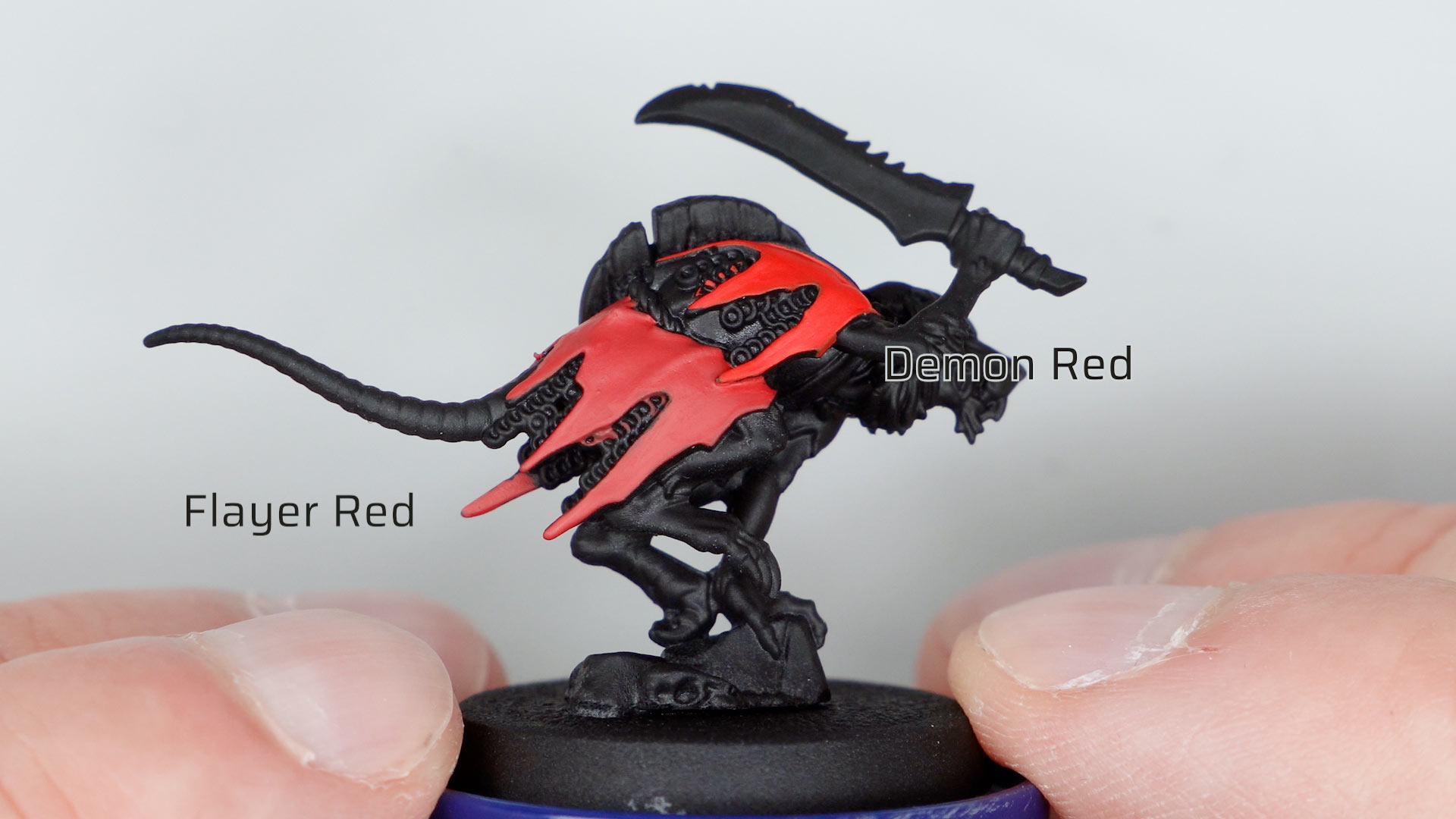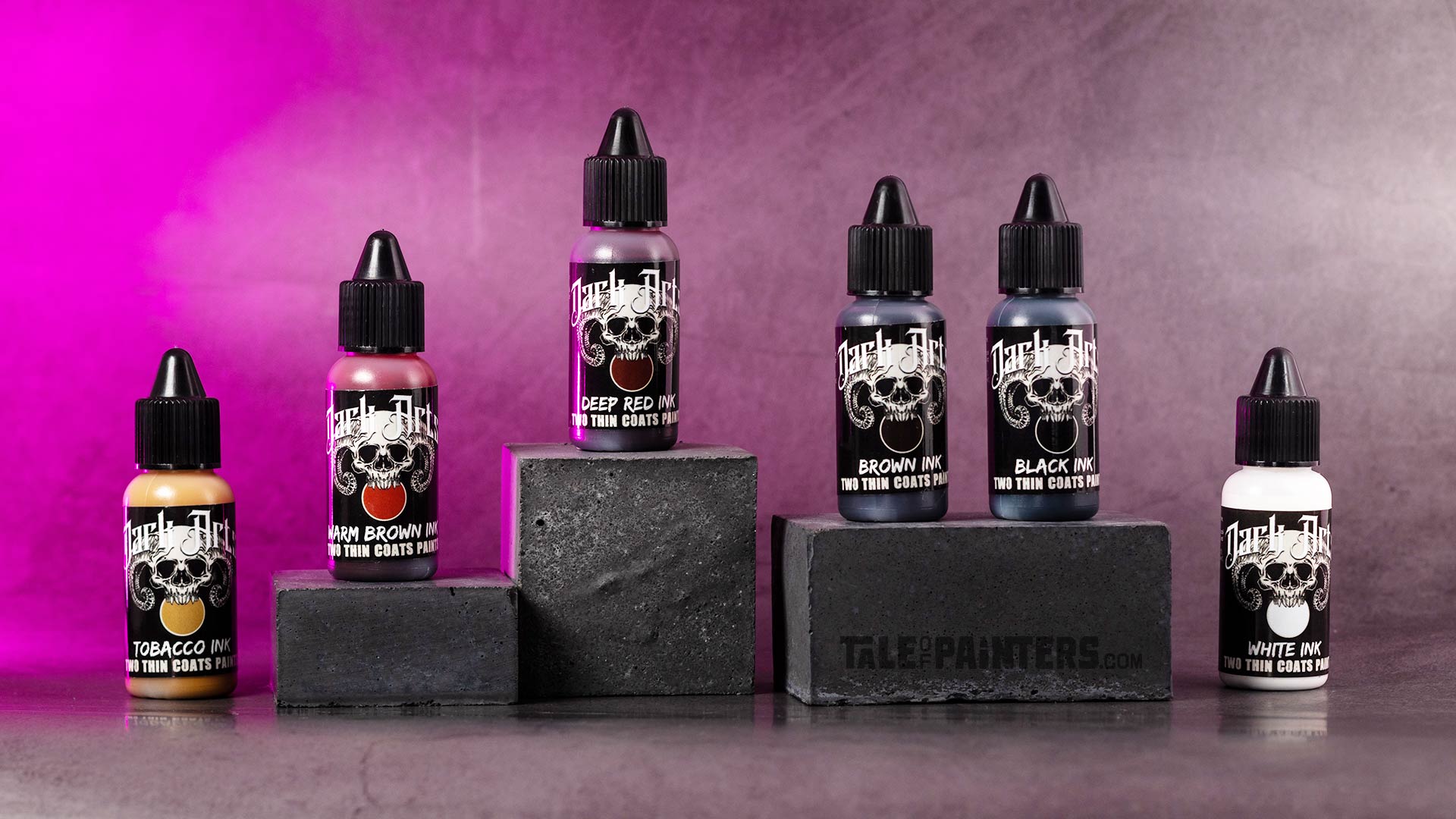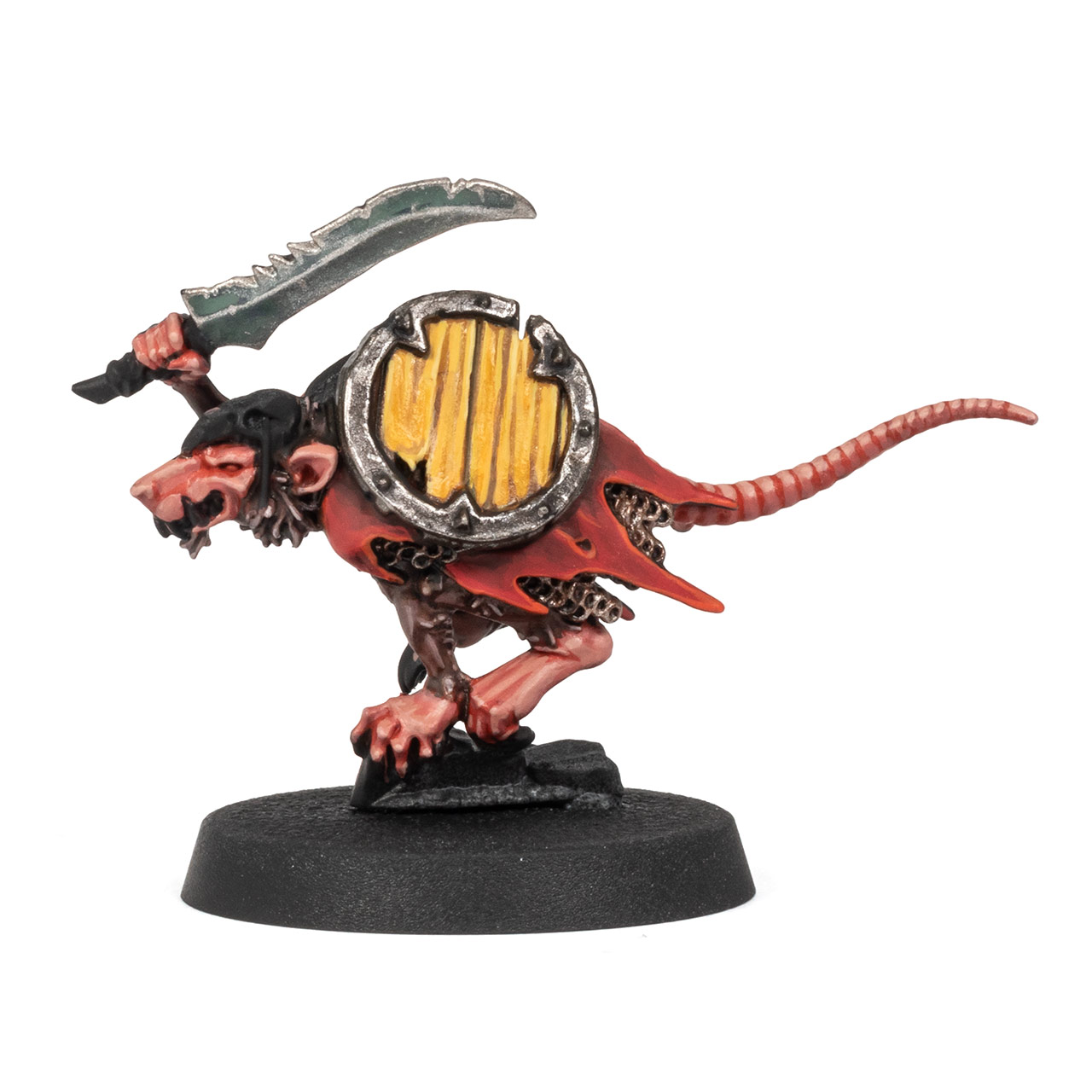The fourth wave of Duncan Rhode’s Two Thin Coats paints brings 30 new colours – but this time, everything’s gone grimdark. Dark Arts is the name of the new expansion, and it does quite a few things differently from the regular Two Thin Coats paints. In this video review, I’ll be testing the new acrylics, metallics, and inks, explaining the differences and similarities, and comparing them with The Army Painter’s equally grimdark John Blanche Masterclass paints.
Dark Arts paints are a standalone expansion to the Two Thin Coats range by Trans Atlantis Games and the well-known former GW presenter Duncan Rhodes. Launched through Kickstarter in 2025, the project adds 30 completely new paints, expanding the Two Thin Coats range to over 210 colours.


Grimdark is the theme here, and the colour palette is based on the Zorn palette, named after the influential Swedish painter Anders Zorn. But hang on, didn’t The Army Painter recently release a very similar grimdark Zorn-inspired set with their John Blanche Masterclass Collection (read my review here)? Indeed, the palette of the legendary Games Workshop art director John Blanche was also heavily influenced by the Zorn palette. However, Two Thin Coats didn’t simply copy The Army Painter’s idea. I’ve been assured that the Dark Arts paints were already in development before The Army Painter announced their John Blanche Collection.
All you need to know about Dark Arts
At the end of the review, I’ll compare both paint sets directly, but for now, let’s take a closer look at the Dark Arts paints. There are 30 brand-new colours with no carry overs from the main Two Thin Coats range. The set breaks down to 22 acrylics, 3 metallics, and, for the first time in the Two Thin Coats range, inks, five of them. I’ll be testing them all in a moment on a model, but first, let’s go over a few similarities and differences. Dark Arts paints come in the same 15 ml dropper bottles as Two Thin Coats but with new black labels. I’m not the biggest fan of these bottles, as I often find excess paint collecting in the cap. But they do come with agitators for easier shaking and are now made from 50% recycled plastic.
There’s one big difference from the main Two Thin Coats range, though: there’s no longer a triad system grouping colours into Shade, Midtone, and Highlight for easier colour selection. All Dark Arts paints feature the DA label and are meant to be mixed and combined more freely.
Testing the Dark Arts paint range
Let’s get started with the testing, watch my video:

The reds
One of the cornerstones of the Zorn palette is red – and Dark Arts offers quite a few interesting reds to explore. In the video I’m painting the clothes of this Skaven Clanrat with DA Flayer Red, a new light crimson. Compared to TTC Demon Red from the main range, DA Flayer Red is a touch more muted, as you can see here. That’s a theme that runs throughout the entire Dark Arts palette – all the colours are slightly muted and desaturated.


To desaturate colours, you add in opaque white, grey, or brown pigments, which also improve the covering power tremendously. And indeed, with DA Flayer Red I can paint straight over a black undercoat in just two to three thin coats. For shading, I use DA Blood Red Sky, a dark, brownish red. Dark Arts paints share exactly the same formula as the main Two Thin Coats range: the consistency is fantastic and homogeneous, and thanks to their self-levelling properties, they go on very smoothly. The drying time is on the longer side, which makes blending a bit easier, and they also perform well when thinned down, for example, when used as a glaze. For the edge highlights I go with Diablo Red, which – contrary to the name – is more of a reddish orange. As you can see in the video, the finish is matte with a slight sheen, just like the main Two Thin Coats paints.
The browns & flesh colours
Next, I turn my attention to the fur. For that, I use DA Cinderborn Brown, a lovely warm mocha brown. Brown isn’t one of the four primary colours of the Zorn palette, but the Dark Arts expansion also comprises intershades derived from mixing the primary Zorn colours. For the skin, I basecoat with DA Masque Flesh, a slightly reddish flesh tone that sits somewhere between TTC Dwarven Skin and TTC Barbarian Brawn from the main Two Thin Coats range.
The ochres
Ochre is another one of the four core colours of the Zorn palette, and Dark Arts offers three ochre-yellow tones that expand the ochres of the main range. To basecoat the shield, I’m using DA Abhorrent Ochre, which has a slightly greenish undertone. Again, the coverage is excellent, taking just two to three thin coats.
If you’d like to see exactly how all the Dark Arts colours fit into the main range, check my Two Thin Coats swatch. It features professionally digitised, hand-painted samples of all 180 Two Thin Coats colours, and now also includes the 30 new Dark Arts paints.


If you already own the previous version, you can download the update for free:


This hand-painted swatch is available in my Patreon shop for a small donation (or by becoming an Autarch tier member). I also have swatches for Citadel Colour, Vallejo Game and Model Color, Warpaints Fanatic, Pro Acryl and AK 3rd Gen – all cross-compatible with each other so you can compare colours across different brands. Check out my shop for details.
The Dark Arts inks
Now, I really want to test the inks. Inks are new to the Two Thin Coats range, so I wasn’t entirely sure what to expect. On the official Kickstarter photos, they looked very glossy and somewhat blotchy. As they weren’t advertised as Contrast-like one coat paints, I wondered, would they behave more like old-school artist inks, like the classic Citadel Inks? Well, not quite. They’re kind of in the middle, like Vallejo Game Color Inks. You can apply them undiluted over larger areas, and they’ll flow and level out fairly evenly. They don’t settle into recesses quite as nicely as one-coat paints like Citadel Contrast or Speedpaints, but they’re also not as patchy or shiny as the old Citadel Inks. They do have a slight sheen, but they’re nowhere near as glossy as they appear in the promo shots. Maybe Trans Atlantis Games tweaked the formula before finalizing the product.


But if the inks deliberately aren’t marketed as one-coat paints, what are they actually for? Well, you can use them straight from the bottle like a strong wash. In the video, I’m applying DA Tobacco Ink to the shield, which contains opaque ochre pigments, producing a more subtle shading effect. You can also thin the inks with a medium, I’m mixing DA Brown Ink with Two Thin Coats Spirit Medium and apply it to the fur. Lahmian or Contrast Medium from Games Workshop would work just as well. For the skin, I’m using thinned DA Warm Brown Ink, which, surprisingly, has quite a reddish hue. You can also paint undiluted ink directly into the recesses, this is often called “blacklining” or “pin washing”. Or you can tint acrylic paints by adding a little ink to them. I mixed a touch of DA Warm Brown Ink into DA Masque Flesh, and used this mix to layer the skin.
You can certainly do quite a lot with the five inks included. Personally, though, I still prefer the latest generation of Contrast and Speedpaint-type ink paints. You can use them for all the same techniques as the Dark Arts inks, and in addition to that you can use them for Contrast-style one coat painting thanks to their smoother, more consistent flow. Also, I would have liked the DA Warm Brown Ink to be a bit less red, and the DA Tobacco Ink a little darker.


For the shield, I used some of the off-white colours to pick out the wood grain. And what can I say? Apart from my nit-picking about the inks, I simply enjoy working with Two Thin Coats, and the Dark Arts paints share the exact same formula.
The metallics
Now, onto the three new metallics. There are some genuinely useful shades here that I’d like to show you. First up is DA Old Brown Metal, a dark greenish brown, quite similar to Pro Acryl Magnesium. I also really like DA Ancient Brass, a muted warm brown tone that reminds me of Runelord Brass from the Citadel Colour range. And finally, DA Ironclad Silver – a brownish silver, somewhat like Iron Hands Steel, but with a warmer tint.
By the way, if you enjoy matching colours across different brands, or want to check whether you already have a similar shade in your collection before buying Dark Arts paints, I recommend consulting my 7-in-1 Colour Matching document, featuring Two Thin Coats and now Dark Arts as a free update:


Over 1,100 accurate hand-painted colour samples, covering the seven most popular miniature paint ranges (Citadel, Warpaints Fanatic, Vallejo Game & Model Color, AK 3rd Gen, Pro Acryl, and Two Thin Coats). Sorted by colour families, hue, value, and saturation, in an interactive PDF document with a handy navigation and helpful appendix about colour reproduction. Check out my Patreon shop for details.
To shade the shield rim and the chainmail, I use thinned-down DA Black Ink and DA Brown Ink, followed by edge highlights of DA Ironclad Silver. I quite like the Two Thin Coats metallics. Their consistency and coverage are excellent, and the size of the metallic particles is quite fine. Some of Vallejo’s metallics, such as Vallejo Model Air Steel and VMA Silver, have a slightly better flow and even finer pigments, but Two Thin Coats can easily hold its own against brands like the new P3, Warpaints Fanatic, and Pro Acryl.
To add a verdigris effect to the blade, I glazed thinned DA Cultmaster Green, which is similar to Incubi Darkness, one of my favourite Games Workshop colours. Green isn’t actually one of the core hues of the Zorn palette, but is a secondary colour that can be mixed by combining a cold black with ochre yellow.
New black and white
Speaking of black, there’s also a new white and black in the Dark Arts range. In keeping with the Zorn palette, the white is a titanium white. At the top of my test model, you can see the new DA Cherubic White, and below it TTC White Star from the main Two Thin Coats range. DA Cherubic White is slightly colder in tone, covers very well after two coats, but compared to White Scar, it’s a bit more tacky and tends to leave visible brush marks if you’re not careful. It’s not the miracle white we’ve all been waiting for, but still a solid white paint.


The new black is DA Animus Black, and as mentioned earlier, it’s a cold hue Zorn-style black. On the test model, there’s not much visible difference compared to TTC Doom Death Black from the main range, except for a slightly more matte finish. However, when mixing with other colours and painting over white, you can see that DA Animus Black leans much more towards blue.
Who does grimark better? Two Thin Coats or The Army Painter?
There are also the John Blanche Masterclass sets from The Army Painter, which likewise promise a grimdark painting experience. So which set comes out on top – Dark Arts or The Army Painter?
Well, both Dark Arts and Warpaints Fanatic offer a slightly muted colour palette and very strong covering power. However, I find that Dark Arts, or rather Two Thin Coats paints in general, have a slightly better flow, are easier to blend, and also thin down more nicely for techniques such as glazing. That’s not to say you can’t blend or glaze with Warpaints Fanatic, but personally, I find these techniques just a touch easier with Two Thin Coats.


I also think the John Blanche sets try to do a bit too much at once: paying homage to Blanche, emulating the Zorn palette, and filling gaps in the Warpaints Fanatic range when it comes to darker tones. For a sub-range that only contains 20 paints, that’s perhaps spreading things a little thin. On the other hand, The Dark Arts palette focuses more squarely on the Zorn palette and its secondary colours, making it feel more cohesive and well-balanced to me.
That said, the John Blanche sets include some very useful washes and two excellent Speedpaints, whereas Dark Arts only comes with those inks. While the inks can be used as washes, you’ll need a separate medium for thinning, which isn’t included in the set. And let’s not forget, Army Painter paints are cheaper and much easier to get hold of.
Where to get
At the time of publishing this review, the Kickstarter is currently being fulfilled to backers. Once that’s completed, the Dark Arts paints (available individually or as a set) will make their way into retail. The main Two Thin Coats range is already available from our partners:
You can find the latest hobby products at our 🇬🇧/🇪🇺 partner stores Wayland Games, Element Games, and Firestorm Games, at 🇩🇪 Taschengelddieb and PK-Pro, and at 🇺🇸 Noble Knight Games with a welcome discount of up to 10–15% over RRP. Using our links helps to support Tale of Painters at no additional cost to you, so thank you very much for using them!
I hope you found this review helpful, feel free to leave a reaction or comment below, or post your questions here or discuss on our Discord channel.
8.0 Score
Pros
- Cohesive, muted colour palette inspired by the Zorn palette
- All the strenghts of the main Two Thin Coats range
- Useful new hues and metallics
Cons
- Inks are less versatile than Contrast or Speedpaints
- Missing the triad system of the main range
- Two Thin Coats are harder to obtain and more expensive than competitors
Final Verdict
So which range does the grimdark thing better – Two Thin Coats or The Army Painter? I think both products have their place. Thanks to the more muted, Zorn-inspired colour selection, the Dark Arts paints really play to the strengths of the Two Thin Coats formula: excellent coverage combined with superb brushability. The acrylics and metallics add some genuinely useful tones to the main range, while the slightly old-school inks aren’t bad either, though in my opinion they don’t quite match up to Contrast and similar paints.

